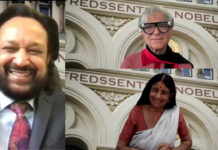
New Year’s Eve, with its emphasis on evening social gatherings with eating, drinking, and dancing underneath all that glitter and sparkle, might seem a totally modern and secular celebration.
The celebrations generally go on past midnight into January 1 (New Year’s Day). Samoa and parts of Kiribati are the first places to welcome the New Year while Baker Island, in the United States, is among the last.
In fact, New Year celebration is an ancient holiday with deep spiritual meaning. For centuries, people have been observing the end of one year and the beginning of another with different cultural traditions. In the past, Romans celebrated New Year with six days of partying that is what we see today.
According to St. Boniface, a missionary from England who visited Rome, described their celebration as people were dancing in the streets with wild cries, disrespectful songs, and tables loaded with food. Women wearing amulets and offering them for sale.
A Time of Seasonal Change
The beginning of Winter Solstice is the turning point of the year. It represents the lengthening of days. It has long been viewed as the birth of the New Year – by non-Christians celebrating the return of the Sun and by Christians welcoming the birth of the Son of God. The days between Solstice and the New Year are a magical and luminous time period. It is more so with modern animated radiant decorations. In the past, in England, the Twelve Days of Christmas were considered omen days and people used to predict the weather in the coming year.
In Scotland, courts remained closed during these days; and in Ireland, people held a belief that if a person died during the Twelve Days, he or she went straight to Heaven. In ancient Babylon, the days between the Winter Solstice and the New Year were seen as the time of a struggle between Chaos and Order and some other cultures also viewed this as a time for reversing order.
Time to Start a Fresh
Life Each culture’s New Year celebration has its own flavor but there are certain common focuses. New Year’s Day is a time for setting things straight such as to do thorough housecleaning, set up new agendas related to personal and public life and health, paying off debts, returning borrowed objects, reflecting on one’s shortcomings, mending quarrels, giving alms and donations.
In Indian and many other cultures, people jump into the sea or river to literally wash off sins or bad deeds done during the year. In Italy, people throw away their old sofas, chairs and even refrigerators out of their windows on New Year’s Eve. In Ecuador, people make dummies, stuffed with straw, to represent the events of the past year. These images are burned at midnight, thus symbolically getting rid of the past.
In most cultures, it is said that most preparations should be completed before midnight on New Year’s Eve. According to British and Hindu folklore, you should not sweep on New Year’s Day because you will sweep your good luck away, and not to take anything even the trash out of the house. You only want to bring new things inside the house to ensure abundance in the coming year. If you must carry something out, be sure to bring something else in first. For a situation like this, people conceal a coin outside the house on the previous night. As this medieval poem reminds us:
Take out, then take in
Bad luck will begin
Take in, then take out
Good luck comes about
Rituals for Good Fortune
Rituals people do on New Year’s Eve and New Year’s Day are imbedded with significance for the future. In the United States, New Year’s Eve is celebrated with formal parties, family-oriented activities, and other large public events. One of the most prominent celebrations in the country is the “ball drop” held in New York City’s Times Square, in Atlanta’s “Peach Drop”, in Nashville “Music Note Drop”.
The American custom of spending the night with the one you love and kissing them at midnight assures that the relationship will flourish during the coming year. In Rio de Janeiro, millions of people gather on the beaches on December 31st to honor “Mother of the Sea,” who brings good fortune.
Even the color of underwear Brazilians wear on the first day of the New Year has meaning. Pink brings love, yellow, prosperity; and white, peace and happiness. New Year in Canada is generally a social holiday and celebrations comprise concerts, late-night partying, and fireworks.
Mexicans celebrate New Year’s Eve by eating a grape with each of the twelve chimes of a clock’s bell during the midnight countdown and wish with each other. They decorate homes and parties in colors that represent their wishes for the upcoming year: red signifies an overall improvement of lifestyle and love, yellow stands blessings of improved employment conditions, green for improved financial circumstances, and white for improved health. They also bake sweet bread with a coin or charm hidden in the dough. When the bread is served, the recipient of the slice with the coin or charm is said to be blessed with good luck in the New Year.
Another tradition is that they make a list of all the bad or unhappy events over the past 12 months before midnight and the list is thrown into a fire, symbolizing the removal of negative energy from the New Year. Mexicans celebrate with a late-night dinner with their families by serving traditional meal of turkey or pork loin. Celebrations outside the home include firecrackers, fireworks, sparklers and shouts.
In Puerto Rico, New Year’s Eve is celebrated with friends and family along with Latin music, fireworks at midnight and sing signature song “Auld Lang Syne” in Spanish. In most other countries, New Year’s Eve is usually celebrated with friends and family and grand fireworks.
Geetha Patil






